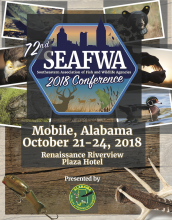Increasing Largemouth Bass Carrying Capacity Using Destratification: A Case Study
Aeration can circulate waters by disrupting thermal density differences associated with stratification, allowing homogenization of tempera- ture, oxygen, and other physicochemical characteristics within the water body. Use of lake and pond destratification as a management tool has been increasing in recent years, yet data are limited regarding its effects on fish communities. This case study examines the response of a largemouth bass (Micropterus salmoides) population to destratification in a 2.4-ha pond over nearly a decade. Biomass (35.8–42.8 kg ha–1) and density (51–93 fish ha–1) of...
